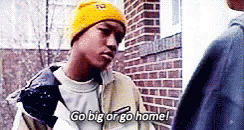How To Film Overhead Shots & Lighting
Introduction:
Alright, this is not your ordinary how-to on shooting overhead footage. It’s more of a “budget” technique, that gets professional-grade results for under $200. It makes lighting and shooting perfect overhead shots accessible to anyone on a budget. This is a detailed version of my video tutorial: Lighting & Shooting Overhead Video. Check out the youtube video below for more context on setting up and shooting overhead footage.
Requires:
Camera with 1/4” 20-thread socket (like this)
Three-Point Lighting Kit (with a hair light that has 1/4” 20-thread mounts)
A “backdrop” surface (paper, color paper, wood, etc.)
Masking tape to keep the base flat (or scotch tape if you don’t mind damaging paper surface)
Recommended but not required:
Monitor + 6’ HDMI cord (any monitor will work, I recommend this one)
***
Pre-Production
Before shooting, take the time to decide your surface backdrop and buy supplies. Think about the final look you want to achieve. A colorful scene may require an art paper backdrop. For a homey, warm look, maybe use a wood base instead. The backdrop has a lot of influence on the feel of the scene, so it’s important to consider options and choose the best one.
Also you should overestimate the amount of surface area you’ll need to cover. Go bigger than you need so you can trim down or frame it out if needed. Otherwise, you may be restricted to a really tight shot.
Quick material tips:
Color Paper: Get at least 36” or higher width paper. Make sure its thick paper. Also texture is a factor in the shot, so find one you really like. I prefer the type with a little bit of natural grain to it.
Wood: The wood can be stained but it shouldn’t be too glossy. Test the gloss by shining a phone flashlight on it. If it has a polished shine, you may want to pass on it. Ideally you’ll want to find a slab with a smooth surface and natural patterns on it.
Stone: Marble or granite are great options as well, but may be subject to gloss and reflections. Be mindful of this when testing your surfaces.
Production:
Now it’s time to set up the scene. First place the surface material where you want to shoot. If you’re using color paper, cut a large piece to cover the table or counter. Overestimate the amount of surface area needed.
Next step is lighting the scene. I recommend setting up with a 2-point lighting, one overhead and one in front. I found this gets the best fill overall, alongside a soft look and shape for the shadows.
The light overhead is often at a higher intensity. The front light can be adjusted to dial in the look of the shadows.
Now you’ll set up the camera on the third light post. Use a light kit that has the two-part hair light, so you can screw the camera onto the rod and fasten it overhead in a “T” shape. If you have gaff tape, use it to secure the stand to the ground. It will be front heavy with the camera on it, so if you don’t have gaff tape or sandbags to hold it down, try using a heavy bag. Also consider counterbalancing it by securing the included sandbag to the opposite end.
Then frame up and shoot the scene. Most external camera monitors include “grid overlay” options to help you achieve symmetry. This is important for repeating shots and resetting position. Many cameras should have a similar option in the settings, so search the menu or Google if that option is available to you. I also recommend watching back shots occasionally as you’re shooting to make sure everything looks good. Check for focus, symmetry, arrangement, and lighting.
Post-Production:
Now that the hard part is done, you’re onto the editing phase. It’s pretty straightforward for editing overhead footage. Use Buzzfeed’s Tasty videos and other overhead content for inspiration. I recommend using techniques like cropping in-and-out on shots to mask edits, adding subtitles or text below if needed, and speeding up shots where needed. If you’re skilled in After Effects, you can really do some cool graphic overlays to make items pop.
***
Now you’re done! Just like that — with all the supplies, set-up, shooting and editing — you survived overhead shooting and got a really cool video(s) out of it. It’s certainly not easy, but it’s really an achievable goal to make professional quality overhead videos. It’s also a repeatable, efficient process that you can use any time. Once you get the process down, you’ll be making beautiful overhead videos.
Happy shooting! Drop a comment if you’ve had good results with this method or have any questions.
The results from the setup shown above. This was an energy bar ad, originally shot with a wooden surface. The decision was to instead use a white paper surface. Also coffee beans stain wood!



